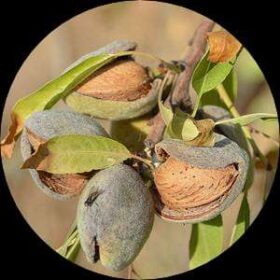- Empty cart.
- Continue Shopping
Kolamb (Mango)
Original price was: ₹600.00.₹489.00Current price is: ₹489.00.
Genus : Philippine Mangoes
“The Kolamb Mango Plant allows you to cultivate your own tree and indulge in the delicious flavor of Kolamb mangoes. These fruits are known for their sweetness, juiciness, and delightful aroma. Start growing your own Kolamb mangoes today.”
Kolumb, also known as Mango, is a delicious tropical fruit that belongs to the Mangifera indica species. It is a popular fruit tree that is widely cultivated in tropical and subtropical regions around the world, known for its sweet, juicy flesh and distinct flavor.
Tree Description:
- Kolumb/Mango trees are large, evergreen trees that can grow up to 30 meters in height, although they are often pruned to a more manageable size for cultivation.
- The tree has a dense, symmetrical crown with dark green, glossy leaves that are typically oval-shaped and arranged alternately on the branches.
- The bark of the Mango tree is smooth and grayish-brown, with prominent vertical fissures as the tree matures.
- Mango trees produce small, inconspicuous flowers that are typically pinkish-white or yellowish in color and are borne in panicles or clusters.
- The flowers are usually fragrant and attract pollinators like bees and butterflies.
Fruit Description:
- Kolumb/Mango fruit is typically oval or oblong in shape, with a thick, leathery skin that can vary in color from green to yellow to red, depending on the cultivar and ripeness.
- The skin is usually covered with small, raised dots or lenticels, which are actually pores that allow the fruit to respire.
- The flesh of the Mango is usually a vibrant orange-yellow color, although it can range from pale yellow to orange depending on the cultivar.
- The flesh is juicy and fibrous, with a sweet and tangy flavor that is often described as a mix of pineapple, peach, and citrus notes.
- The Mango fruit typically contains a large, flat, and oblong-shaped seed or pit in the center, which is usually not edible.
Cultivation:
- Kolumb/Mango trees are tropical and subtropical plants that require warm temperatures to grow and thrive. They are typically grown in regions with a frost-free period of at least 4-5 months.
- They prefer well-drained, fertile soils, and are typically planted in full sun for optimal growth and fruit production.
- Mango trees are typically propagated through grafting or budding, as growing from seeds may result in variations in fruit quality and characteristics.
- The trees are generally slow-growing, taking several years to mature and produce fruit.
- Mango trees require regular watering, especially during the flowering and fruiting stages, and benefit from fertilization with balanced nutrient formulations.
- Pruning is important for shaping the tree, improving air circulation, and promoting fruiting. It is typically done during the dormant season.
- There are many different cultivars of Mango, with varying fruit sizes, colors, flavors, and ripening times, offering a wide range of options for growers and consumers.
Uses:
- Mango fruit is primarily consumed fresh, either on its own or in various culinary applications, such as desserts, salads, smoothies, and sauces.
- Mangoes are also used in the production of dried fruit, canned fruit, juices, nectars, and fruit preserves.
- In some cultures, Mangoes are used in traditional medicines for their potential health benefits, as they are a good source of vitamins, minerals, fiber, and antioxidants.
- Mango leaves, bark, and seeds are also used in some traditional remedies and herbal preparations for various purposes.
- Additionally, Mango wood is sometimes used in carpentry, furniture-making, and for fuel.
In conclusion, Kolumb/Mango is a tropical fruit plant that is highly prized for its delicious taste, vibrant color, and versatility in culinary applications. It is a popular fruit tree that requires specific growing conditions, but with proper care, it can be a rewarding addition to tropical and subtropical gardens and orchards.












Reviews
There are no reviews yet.